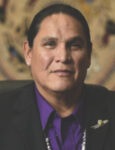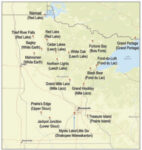
How does a wallet compare with a tout sheet? Or jewelry with a slot machine ticket?
They are symbols of action at different ends of the red-hot gaming-amenity spectrum. Shoppers and horse players, coming from opposite vantage points, direct tribal gaming’s next financial break from the gate.
The $120 million Tanger Outlets, connected on either end by a casino at Foxwoods in Connecticut, opens May 21. It is projected to spike the casino’s visitation totals from nine million to 12 million, provide nearly 1,000 jobs and bring about $10 million tax revenue to the state.
In New York, an estimated $100 million, high-end shopping lineup called “The Next Big Thing” breaks ground this spring at Turning Stone Casino. It will be completed next year.
Both projects should attract new revenue and extend hotel visitation, via shopping excellence. Each has the signature of the Gordon Group, the distinguished developer of the Forum Shops that diversified Las Vegas’ amenities menu.
Outlet patrons have become a built-in revenue stream for gaming operators who accommodate them. They represent a lightly tapped customer base and can even “shop ‘till they improve the drop” by adding gambling to their activity.
It’s a different story for horse racing, an ailing industry that became a reclamation project for new investors. Tribal ownership has stabilized tracks in Oklahoma, Texas and Washington. Multimillion-dollar cash infusions, coupled with on-site gaming devices, have rescued tracks and brought money into tribal coffers. They have also relieved horse-racing purists who worry about new owners closing down their facilities.
The outlet customers and racing diehards play a prominent role in gaming’s future. Each represents a revenue ideal: Bling is cha-ching. Or, its po$t time.
‘Tanger-ble’ Asset
Foxwoods makes a big play with the Tanger Outlets, an enclosed quarter-mile corridor with 82 retail shops that customers can enter only by walking through one side or the other of Foxwoods Resort Casino. One side of the Outlets is connected to the casino floor by the Fox Tower and the other is near the Grand Pequot Casino.
The May 21 grand opening becomes a timely, early-summer season kickoff.
Annette DeBois, vice president of retail and development operations for Foxwoods, cites the synergy between gaming and shopping facilities posted near each other. Foxwoods gains a link connecting two of its gambling areas. Tanger, in the rare role of being an interior property, obtains gaming to spike its foot traffic.
“It opens up the opportunity to make a full day or full weekend out of your visit,” DeBois asserts. “Gaming customers can bring others with them who do not want to game but do wish for something else to do.”
Neither shopping nor gaming has to be finite. A person can combine both activities, using each as a break from the other.
“One of the biggest downfalls in outlet-mall shopping is that you have to ask yourself afterward whether you can get lunch or whether you can sit down and have a drink,” DeBois says. “Well, for our existing customers who come to Foxwoods for gaming, we now have this beautiful mall connecting two properties, and when you walk into the casino, you can have wonderful entertainment, food and beverage options.”
Not to mention an intangible, like bonus spending. Nail a nice payout in the casino and celebrate with an unanticipated purchase in the outlets. Casino reward dollars also will be honored in most Tanger shops, DeBois confirms.
Gaming and shopping could hardly be more interlocked.
The investment underscores reaction to nearby competition in Rhode Island, the advent of casinos in Massachusetts and the presence of gaming in New York. All have been feeder regions for Connecticut-based Mohegan Sun and Foxwoods, which have lost a share of all those markets. Although Foxwoods and Mohegan have about $3.5 billion in combined debt, they remain committed to priming the financial pump.
Mohegan Sun, already featuring abundant shopping and a major sports arena that hosts everything from professional basketball to major championship fights, added indoor lacrosse in January. It obtained the Philadelphia Wings and renamed them the New England Black Hawks, placing them in the 9,500-seat arena.
From the Foxwoods perspective, DeBois retains a full-steam-ahead approach.
“We always have to up our game and reinvent ourselves,” she indicates. “We are never in a static environment, never going to reach the end of the journey. You have to love the challenge. What we’ve done is exciting. We have become a shopping destination and we have created so many jobs.”
Turning Stone would like to make similar projections next year.
“The Next Big Thing,” so dubbed until a permanent name is found, will be an expansive 250,000-square-foot enclosed venue. It will feature a mix of 60 luxury brand retailers, 15,000 square feet of varied dining options, a six-screen movie theater, a deluxe bowling alley, and designer features including fountains that captivate guests with daily water shows.
Ray Halbritter, CEO of Nation Enterprises, says the luxury outlet and entertainment venue will create more than 1,100 new jobs. That could mean tens of million of dollars for surrounding counties and state tax coffers.
The Oneida Indian Nation estimates the addition will result in another 5 million visits a year after it opens in the fall of 2016, roughly doubling the number of visits it receives now. ?
Retail Has Emerged
Minnesota-based Cuningham Group, sparked by principal Tom Hoskens, witnessed a retail evolution in small, medium and large sizes over recent years.
The small size, represented by a retail concourse and restaurant section tucked inside a project of about half a billion dollars for the Cherokee Nation in North Carolina a couple years ago, provided a complementary gaming piece. The medium space can be seen as an attached outlet shopping section adjacent to a property for Viejas casino near San Diego. The Viejas Outlet Center has more than 40 shops, a bowling alley and restaurants across the street from the casino, a partner to the facilities. It has operated since the late 1990s.
The colossal retail statement can be made at Las Vegas-based SLS, which opened last August and will ultimately have a 200,000-square-foot retail offering, Hoskens says. The Cuningham Group is part or that effort to glamorize non-gaming amenities.
“When you talk about retail, you get everything from bargains to bling,” Hoskens says. “Retail was once just an accent piece, but you can now expand that to become a huge generator of income if you have more stores. This is the wave of the future, something that can really help companies expand their economic base.
“It was not long ago that people were saying $1,000 per square foot of gaming was solid,” he recalls. “Now that number is up over $2,000 in many places—I recently saw that it was $2,289 in Macau. My goodness, that’s gorgeous. At the same time that gambling revenue is going down, retail is going up, sometimes 15 percent a year.
“When you build a shopping complex, it gives different people things to do. One will spend on retail, another will spend money gambling. Does the shopping option help extend visiting days? You bet it does. They will stay longer because there are enough activities.”
Hoskens says the average demographic age for Las Vegas visitors is 46. The younger population savors the nightclub and restaurant experience either as a gaming alternative or a complement to it.
“In Las Vegas, the non-gaming revenue is about 64 percent of the total mix now,” he indicates. “Las Vegas is continuing to grow. They had 41 million visitors, the highest ever last year. The draw is not just gaming, it is everything else. This is the direction that casino resorts and towns needs to follow. They just have to figure out a way to do this on the retail end.”
SLS certainly will. It plans to open a 22,000-seat basketball arena next May, add movie theaters and light shows, and create an overall phenomenon Hoskens equates with Times Square.
Food for Thought
Memphis-based Hnedak Bobo Group has a long, prosperous relationship with tribal gaming. On a grand scale, it helped with the development of WinStar, one of the world’s largest casinos for gaming space. WinStar is located in Oklahoma near the Texas border.
Drilled down to a smaller scale, HBG works with properties on how they present amenities.
Dike Bacon, principal for HBG, says the craft/experimental food trend remains a compelling intersection that joins the technology-enabled and informed customer with the strong localized farm-to-table movement. This trend is weighted toward healthy eating, high-quality preparation and unique, locally sourced ingredients. It is driving an artisan aesthetic that impacts designs in many ways, he contends.
“We’re doing more chef’s tables, large community tables and open-display kitchens where guests are entertained by the artful preparation of food while they dine,” Bacon says. “One important key to this design aesthetic is having many different experiences within a single space.
“We are creating amenity spaces that are more timeless, fresh, and specific to a point of view. Transformative ‘experience’ is often found in the peeling back of layers that tell a story or unfold in creative and differentiating ways,” Bacon adds. “To the potential peril of some national brands, this is the exact opposite of the rubber-stamped, formulaic product. Today’s customers demand an amenity product that is real and often grounded in a local or regional context. We’re combining ideas that may have some nostalgia or eclecticism to them, but are paired with unlikely or unexpected design details that give the environment a less convoluted or scripted feel.”
Many of the food and beverage spaces HBG designs for the West Valley Resort in Arizona follow these design hallmarks. Industrial influences are paired with high-tech modern amenities in some of the F&B venues, while others are open to expansive views to the outdoors and connect farm to table in an authentic way.
“Rather than transporting the guest to another place or time thematically, we are celebrating the unique, local culture and authenticity of the food and environment,” Bacon says.
While food excellence remains a staple of customers, the shopping will ideally be linked to a property.
Tribes Keep Pace
The most literal intersection of shopping and racing occurs at Chickasaw-owned Remington Park in Oklahoma City.
It was built in 1988 by the late Edward DeBartolo Sr., a shopping mall developer who also owned Thistledown in Cleveland and Louisiana Downs in Bossier City, Louisiana. The horse-racing industry had varied partnership visions between racing, shopping and the advent of simulcasting. Most of those plans faded, giving way to the racing concept that combined casino slots with racetracks.
Into that realm stepped Global Gaming Solutions, the gaming arm of the Chickasaw Nation. It has owned and revitalized Remington Park since 2010. The Cherokee-owned Will Rogers facility outside Tulsa, Oklahoma has been in operation several years longer.
Remington sports a second floor with approximately 750 gaming devices, while Will Rogers offers 250 on its first floor. Tribal influence has forged a wire-to-wire success story at these establishments, according to Constantin Rieger, executive director of the Oklahoma Racing Commission.
“The Chickasaw ownership of Remington is going quite well,” Rieger says. “The gross revenues are up, the race quality is up and the tracks are pretty proud of their product. It’s real nice when a track adds gaming devices but remains a track. The racing benefits from the gaming and gaming benefits from the racing. By law there would be no gaming without the races because they can’t turn the machines on without them. You can’t gobble up one to make the other work.”
There was no gobble-up here. The tribe anted up, purchasing the facility for about $80 million and pouring $15 million of improvements into the clubhouse, parimutuel windows, spectator-viewing areas and a four-story, high-definition infield screen. Armed with gaming devices to complement racing, Remington became a destination.
Rieger says the tribes show sound philosophy. They set up the racing/gaming business model, let racing people handle that genre and reap the benefits.
“The formula I believe they have used is a gaming sense complemented with what they have been able to learn within this industry,” Rieger contends. “Look, they operate WinStar, not far away from here, so you know they have to be doing something right. When you combine all the acumen they bring from the gaming side and then their ability to get the right people into the racing end, they were bound to be successful, and they have been.”
Remington and Will Rogers combine for approximately 180 racing dates throughout the year. Remington Park also annually hosts the richest race in Oklahoma, the $1,000,000 Heritage Place Futurity in May.
Global Gaming Solutions ventured to neighboring Texas and purchased Lone Star in 2011. The well-known facility hosted the prestigious Breeders Cup Championships—horse-racing’s version of the Super Bowl—in 2004. It prospers under the new ownership, averaging about 1 million fans per race season.
In Washington state, tribal connections with racing remain paramount. The Muckleshoot Tribe marks 2015 as its operational debut of Emerald Downs Race Track near Seattle. The tribe announced the purchase in November 2014 and expects to complete the ownership transition early in 2015.
Acquiring the track was long considered a logical step for the Muckleshoot Tribe. It has been Emerald Downs’ landlord since 2002, when it obtained the 157-acre property, and contributed more than $11 million in purse enhancements to keep the track afloat.
The sale renewed speculation that the Muckleshoot group will seek permission to install casino-style gambling at Emerald Downs. It already operates the successful Muckleshoot Casino, the state’s largest tribal property, about five miles southeast of Emerald.
Tribal officials have not confirmed long-term plans. Under state law, the Emerald site would have to be converted to trust land before the tribe could open a casino there. That’s a potentially lengthy process requiring federal approval.
Regardless of the time frame, its purchase of Emerald could, yet again, provide the financial injection to save a struggling track.













